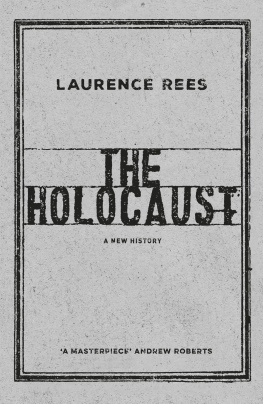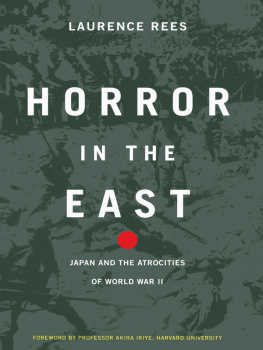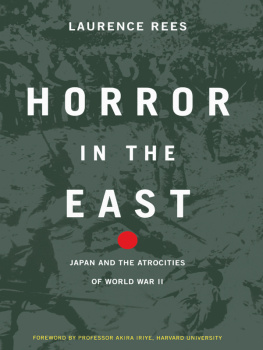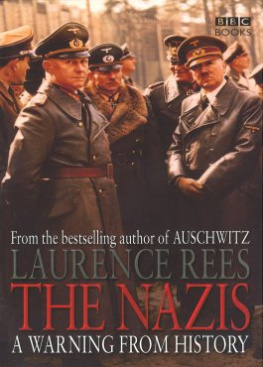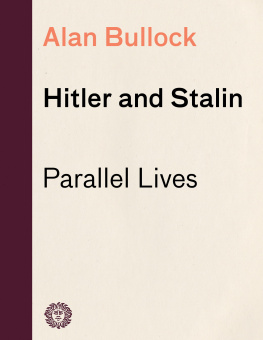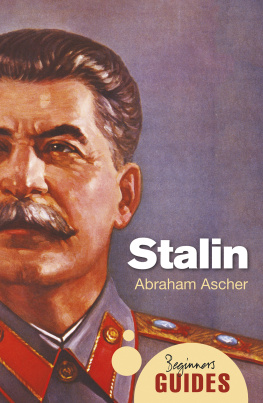Laurence Rees - Hitler and Stalin: The Tyrants and the Second World War
Here you can read online Laurence Rees - Hitler and Stalin: The Tyrants and the Second World War full text of the book (entire story) in english for free. Download pdf and epub, get meaning, cover and reviews about this ebook. year: 2021, publisher: PublicAffairs, genre: Non-fiction. Description of the work, (preface) as well as reviews are available. Best literature library LitArk.com created for fans of good reading and offers a wide selection of genres:
Romance novel
Science fiction
Adventure
Detective
Science
History
Home and family
Prose
Art
Politics
Computer
Non-fiction
Religion
Business
Children
Humor
Choose a favorite category and find really read worthwhile books. Enjoy immersion in the world of imagination, feel the emotions of the characters or learn something new for yourself, make an fascinating discovery.

- Book:Hitler and Stalin: The Tyrants and the Second World War
- Author:
- Publisher:PublicAffairs
- Genre:
- Year:2021
- Rating:3 / 5
- Favourites:Add to favourites
- Your mark:
- 60
- 1
- 2
- 3
- 4
- 5
Hitler and Stalin: The Tyrants and the Second World War: summary, description and annotation
We offer to read an annotation, description, summary or preface (depends on what the author of the book "Hitler and Stalin: The Tyrants and the Second World War" wrote himself). If you haven't found the necessary information about the book — write in the comments, we will try to find it.
Hitler and Stalin: The Tyrants and the Second World War — read online for free the complete book (whole text) full work
Below is the text of the book, divided by pages. System saving the place of the last page read, allows you to conveniently read the book "Hitler and Stalin: The Tyrants and the Second World War" online for free, without having to search again every time where you left off. Put a bookmark, and you can go to the page where you finished reading at any time.
Font size:
Interval:
Bookmark:
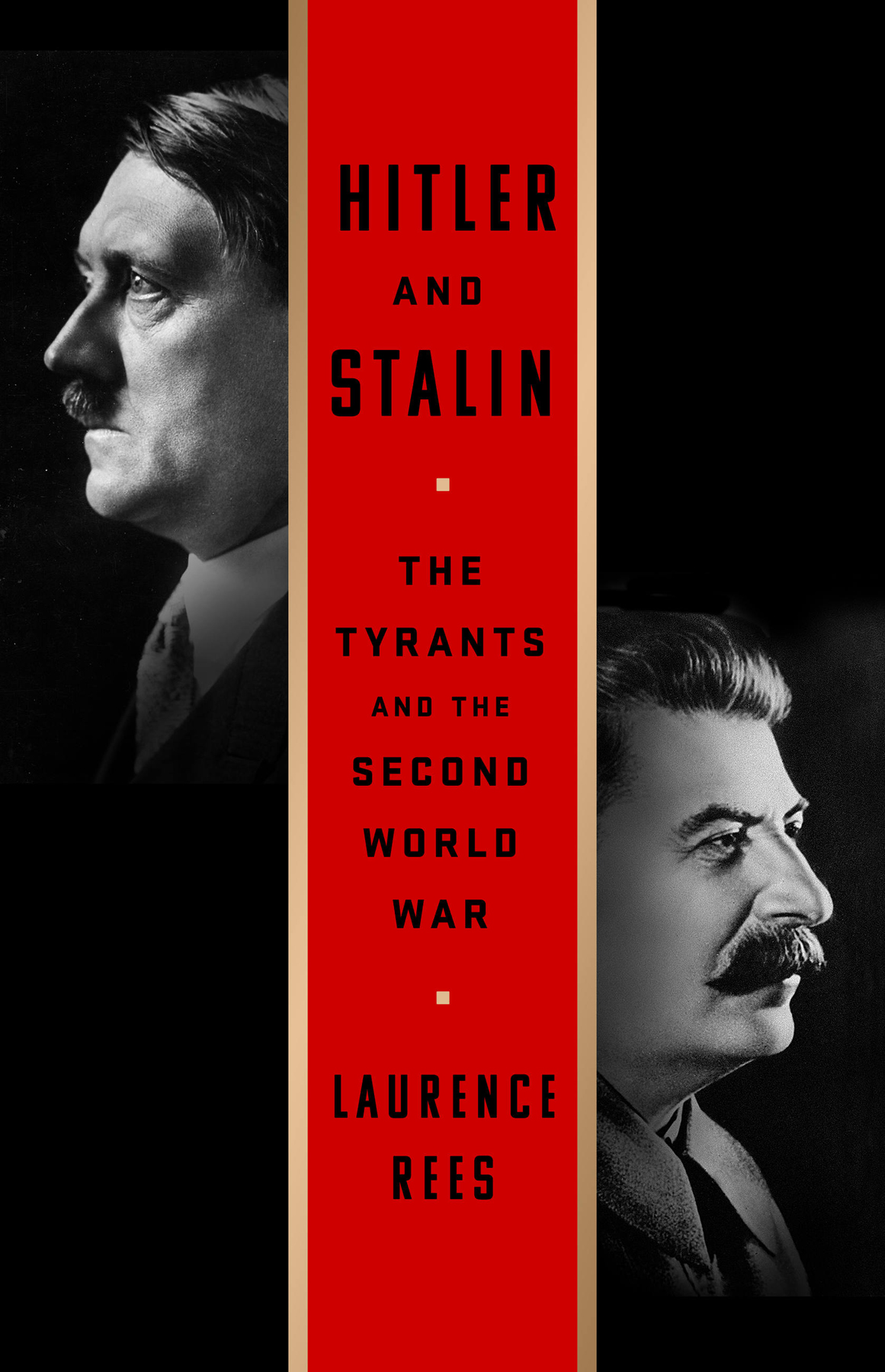
I want to conclude with some brief words on the way in which Hitler and Stalin are perceived today not least because these two individuals, almost more than any other historical figures, still live on in the consciousness of the public.
Since their criminal history is such a vital part of their legacy, we first need to confront the question of numbers, and look at the scale of suffering that each of them left behind. Here we must tread with extreme sensitivity. There can be no comparative balance sheet of horror. As the testimony in this book demonstrates, bare statistics cannot convey the true nature of the suffering. However, while always remaining mindful of that fact, it is surely also reasonable to pose the simple question how many civilian deaths was each of these tyrants responsible for?
Its not an easy question to answer. One problem is the difficulty of gaining precise figures. Records are often fragmentary and those that exist deliberately falsified. Shifting borders, disputed nationalities and the distortion of figures for political purposes all compound the problem of working out the number who died. It is possible, however, to come to some broad conclusions. The first is that Stalin and Hitler were each responsible for deaths on a scale that stuns the imagination.
One of Stalins most notorious acts of destruction was undoubtedly the famine of the early 1930s in which at least five million people lost their lives, just under four million in Ukraine alone. Add to that between 1.6 million and three million who perished in the Gulag (this figure is one of the most difficult to calculate),
How exactly does Hitler compare? As is well known, around six million Jews perished in the Holocaust, the majority of either Polish or Soviet nationality. Nearly two million non-Jewish Poles also died as a consequence of the Nazi occupation a figure that has never received the publicity it should. To this number must be added at least 200,000 Sinti and Roma, and all the other civilians from a variety of other persecuted groups killed across the Nazi empire in concentration camps and elsewhere. This gives us a total of about fourteen million non-combatants who perished under the Nazis.
This number is a low estimate, since it includes only those Soviet civilians killed by the Germans in direct and deliberate killing actions, in what some historians call hot or cold blood.
The six million Jews who died in the Holocaust fall into a separate category. As we have seen, Hitler had decided that the Jews as a group men, women and children would be exterminated, many in purpose-built factories of death. No one else in the history of the world has ever implemented such a plan. The Holocaust must rightly be considered the most infamous part of Hitlers legacy.
The distinctiveness of the Holocaust is especially relevant in any comparison between Hitler and Stalin because of the legacy of the Historikerstreit (Historians Dispute) in Germany in the 1980s. This often fractious debate focused on the extent to which the Nazis policy of extermination towards the Jews was different in kind to other atrocities, particularly those committed under Stalin. My own view expressed not just in this book but previously in my histories of the Holocaust and Auschwitz could not be clearer. I believe the Holocaust was singular, for the reasons I expressed in the previous paragraph and earlier in this work.
There was also another key difference between the killings instigated by Hitler and the killings instigated by Stalin. The vast majority of those who died because of Stalins actions were Soviet citizens, while the vast majority killed by Hitler were non-Germans. This difference follows from their respective ambitions. Stalin was focused on repression within Soviet territory for most of his time in power, while Hitler aimed at creating a vast new empire, within which there was no place for a whole variety of people that he deemed undesirable chiefly the Jews. In that context its a common misconception to think that German Jews made up substantial numbers of those who died. In fact, less than 1 per cent of Germans were Jews. It was the countries the Germans invaded in particular Poland, Hungary and the Soviet Union that contained large Jewish populations.
This geographical distribution of the deaths demonstrates one further difference between the two tyrants. Hitlers view was that Germanys only chance of long-term survival was to grow bigger much bigger. As a result of his desire for German expansion, and his steadfast belief in racist ideology, he played the leading role in three of the most consequential decisions ever taken: the decision to invade Poland, which led to the Second World War; the decision to invade the Soviet Union and start the bloodiest single part of that conflict; and the decision to murder the Jews.
Yet, incredibly, the appalling death toll for which Hitler was responsible represents the fulfilment of only a part of his ambition. Had his gigantic colonization plans ever been fully realized then tens of millions more would have died.
As for Stalin, while he did not completely abandon the idea of exporting the revolution to other lands, he had no immense plan of conquest. The eastern European countries that came under his control after 1945 suffered this fate only in the wake of Hitlers defeat, and the territory he snatched in eastern Poland and elsewhere in 1939 he gained only because of his deal with the Nazis.
Of the two tyrants, therefore, it is Hitler who is more broadly seen as a symbol of evil today. Even those people I met who had once been committed Nazis, and were still sympathetic to the regime, had problems circumventing the Holocaust and Hitlers role in creating it. Nonetheless, a small minority tried. One tactic was to deny that the Holocaust had ever happened (the photos are faked); another was to say Hitler knew nothing about it (Himmler kept all knowledge of the killings to himself). But both excuses are easily demolished, as is the idea that there is somehow an equivalence between the mass murder of the Jews and the Allied bombing of civilians. No matter how hard anyone attempted to spin the history, the truth remained the same. Hitlers personal legacy is that of a war criminal of the most loathsome kind.
Unfortunately, it does not follow that many of the ideas that underpinned Hitlers belief system have vanished from the earth. Fanatical and intolerant nationalism, for instance, is not just still with us but growing in many countries. Ever more strident political discourse and the scapegoating of different groups, whether Jews or others, are also on the increase. Just as worrying, the rule of law and the freedom of the press two targets of attack by the Nazis are under threat in countries that were once thought to be committed to democractic ideals. These developments ought to cause us grave concern.
As for the image of Stalin today, his popular reputation is more complex than Hitlers especially in Russia. In 1956, Khrushchev, by then in charge of the Soviet Union, finally got his revenge on the man who had humiliated him on numerous occasions. Three years after Stalins death, Khrushchev denounced the former Soviet leader in his famous secret speech at the Twentieth Party Congress. He said Stalin had instigated the Great Terror against many honest people, had not prepared adequately for the war against Hitler, had unjustly deported entire ethnic groups and had pursued still more purges after the war.
The speech did considerable damage to Stalins reputation within the Communist Party and more broadly within the Soviet Union. So much so that Stalins embalmed body, which since his death had lain next to Lenins in the mausoleum on Red Square, was removed in 1961 and placed in the Kremlin Wall Necropolis. Stalin, overshadowed by Lenin in life, was now overshadowed by him in death.
Font size:
Interval:
Bookmark:
Similar books «Hitler and Stalin: The Tyrants and the Second World War»
Look at similar books to Hitler and Stalin: The Tyrants and the Second World War. We have selected literature similar in name and meaning in the hope of providing readers with more options to find new, interesting, not yet read works.
Discussion, reviews of the book Hitler and Stalin: The Tyrants and the Second World War and just readers' own opinions. Leave your comments, write what you think about the work, its meaning or the main characters. Specify what exactly you liked and what you didn't like, and why you think so.

